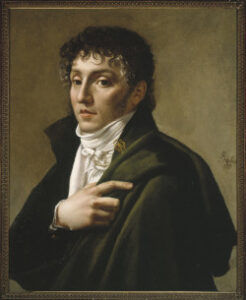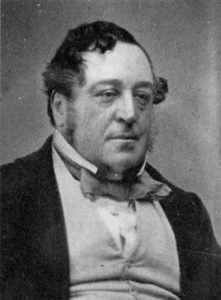
Who is Peter Warlock? The name is probably not familiar to you, even if you are a self-proclaimed classical music buff. The short answer is Peter Warlock is Philip Heseltine.
Born in London in 1894, Heseltine was a music critic (and a combative one at that), editor, and founder of the musical journal The Sackbut. His critical writings were all listed with his given name, but he took on the pseudonym Peter Warlock for his music compositions.
Keep reading and you’ll also see, this wasn’t his only pseudonym!
Why the name Peter Warlock?
As a music critic, Heseltine had become known as a controversial figure, regarded with suspicion and hostility in the London music circle. So in 1918 when he sent seven recently composed songs to a publisher, he used the pseudonym Peter Warlock. The name is said to have originated from his involvement and interest in the occult.
Peter Warlock’s Music
Unlike many well-known composers, Peter Warlock was not formally trained in the area of music composition. He was largely self-taught, but he received encouragement from fellow English composers like Frederick Delius. His body of work consists mainly of songs for solo voice and piano and song cycles (150 of them) like The Curlew and Candlelight, but his Capriol Suite, in particular, stands out and remains his most popular composition.
The Capriol Suite is a set of dances originally written for piano duet. Warlock later scored it for both string and full orchestras. Written in 1926, it was based on tunes in Renaissance dances and in today’s world would be recognized as a sort of “throwback” piece with a few modern harmonies incorporated. It isn’t surprising that he would be inspired to write in an early English music form. Over his lifetime, he made well over 500 transcriptions of early works including compositions from Henry Purcell, John Dowland, and Thomas Ravenscroft. Though the work has six movements, it only takes about 10 minutes to perform. Be sure to check out our performance of it on February 23!
Warlock’s music generally well-received by the public and critics. Ralph Vaughan Williams was reportedly “delighted” with the reception of Warlock’s Three Carols which Vaughan Williams conductor in 1923. Heseltine/Warlock conducted a performance of the Capriol Suite in August 1929 – the only public conducting engagement of his life. The audience recalled him four times after that performance.
Peter Warlock’s Legend
The legend of Peter Warlock is surrounded by controversy and rumor. In addition to his combative and argumentative nature and his interest in the occult, he was said to have experimented with a variety of unconventional practices including cannabis tincture and flagellation. He was also said to enjoy composing obscene limericks and he even edited an anthology in praise of drinking under a new pseudonym, “Rab Noolas” which is “Saloon Bar” backwards.
Although the early 1920’s, particularly 1925-1929, were a fruitful time for Warlock, he found his creativity waning in 1929. Life became even bleaker in 1930 when there was little demand for his songs and he turned to music criticism and transcription again to support himself. He suffered from severe depression and in December 1930, he was found dead in his flat from gas poisoning. The coroner determined that there was insufficient evidence on whether it was suicide or an accident.
His life has inspired numerous characters in both literature and film. D.H. Lawrence based his character, Julius Halliday, on Warlock in the novel Women in Love. Warlock also inspired characters in Aldous Huxley’s Antic Hay and Jean Rhys’ short story “Till September Petronella”. His life was depicted in the films Voices From a Locked Room and Peter Warlock, Some Little Joy, although it was highly fictionalized in the former.
In 1963, the Peter Warlock Society was created and interest in his works began to increase. While some music experts acknowledge that his music today is often regarded as “programme filler” and encore items, his Capriol Suite is still performed frequently to this day. In fact, you can hear the Parker Symphony Orchestra perform it on February 23.




